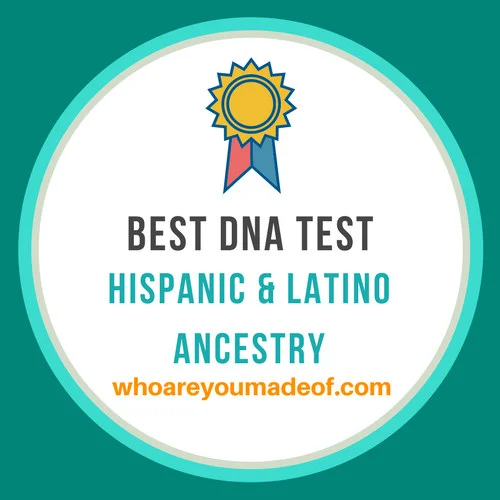If you have Hispanic or Latino ancestry, you might be wondering which DNA is best for you. In this post, I will explain which test is best for Hispanic or Latino Ancestry and why.
Some people are understandably skeptical about whether or not there is a DNA test out there that can provide accurate results for people who are of primarily non-European descent. And if there is such a test, which is the best test for Hispanic ancestry?

Ancestry DNA and 23andMe offer the best test for Hispanic ancestry
If you are just looking for the quick answer, I will tell you that Ancestry DNA and 23andMe have the best tests - by far. These companies have both dedicated considerable time and resources to help customers with ancestry in Latin America to determine in which country their recent and distant ancestors most likely lived.
Why is Ancestry DNA's test best for Latino ancestry?
Up until a few months ago, if you were to have asked me this exact question, I would have told you that there is no "best" test.
Latin Americans are exceptionally genetically diverse, as a general rule, and there is no "typical" ancestry across all of these countries, despite misconceptions that everyone is descended from Spanish conquerors who intermarried with Native American women.
People from Latin America can show ethnicity from all over the world, including Asia, Europe and Africa. The DNA testing companies can show these ethnicities fairly easily.
There are a few reasons that it has been difficult for companies to truly offer accurate DNA results for people with Latino ancestry. The primary reason is that most people whose families are from Latin America have at least some Native American DNA.
Ancestry DNA has recently added more than 30 different sub-regions in the Native American category. So if your family has Latino heritage, and might perhaps have some Native American ancestry, you will now be able to see which general region your Native American heritage is from, as well as your European, Asian, and African ancestry.
Why most companies usually don't show specific regions under the Native American category
Previously, most test results simply reported "Native American" as a percentage, and showed the entire North and South American continents to illustrate where this DNA came from.
This lack of detail was very frustrating for people interested in DNA testing, even though it wasn't necessarily even the "fault" of the companies for not being able to provide these detailed results. There is a scientific explanation.
Explained simply, it is generally accepted that the entire population of North and South America was populated over the course of thousands of years by descendants of only a few small groups of people who migrated from Asia.
This migration occurred perhaps about 30,000 years ago, but when climate conditions changed and the land connection to Asia became covered by water, the population in these continents became genetically isolated. There was very little admixture (fancy word for mixing) with other populations like there was in many other parts of the world.
That is, until the arrival of Europeans and Africans in the 16th century.
This genetic isolation meant that people with Native American descent often show more genetic markers in common with each other, even across broad geographic regions, than people usually would.
In populations that are descended from small groups, people are actually related to each other in many, many ways over the course of hundreds and thousands of years.
The main challenge for these testing companies is to develop a large database and a technology sensitive enough to report subtle differences in the DNA results, and give the test taker a more detailed geographic region for their Native American ancestry.
How do I get started with my DNA testing?
If you are ready to take the first step in your DNA testing journey, the first thing that you should do is go ahead and get your DNA testing kit from Ancestry. If you use this link, I will receive a small commission at no extra cost to you, which really helps me support this website: Discovery the story AncestryDNA® can tell Thank you so much for your support!
While you are waiting for your DNA results to come back, which usually takes 4-6 weeks, I recommend to all of my readers that they start building a basic family tree to see how much they already know about their family heritage.
Conclusion
I am really happy that Ancestry DNA has taken this challenge seriously. They have promised to continue to add more specific regions and update results as they become available.
I have already seen three kits that I manage be updated with these new regions (their test results previously only reported a general Native American category).
Please note that the available regions don't cover much of the United States. They only cover parts of the southwestern United States. Hopefully they will eventually expand these regions to cover some of the indigenous regions of the US.


Richard (Ocana) Westerdoll
Saturday 20th of January 2024
My mother is mexican and my father swedish. I want more info on my hispanic heritage. Will mitocondrial or X-chrom be best?